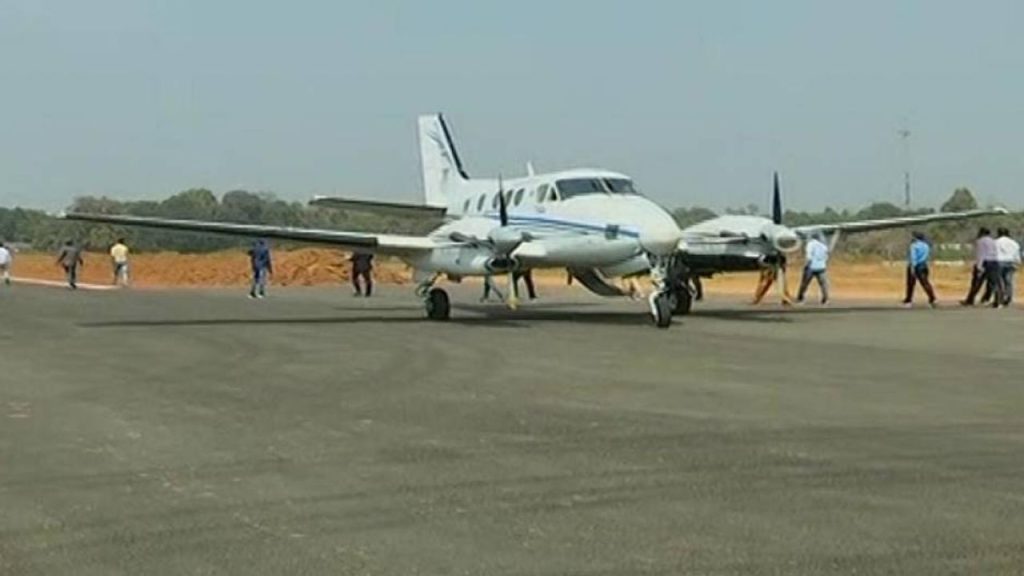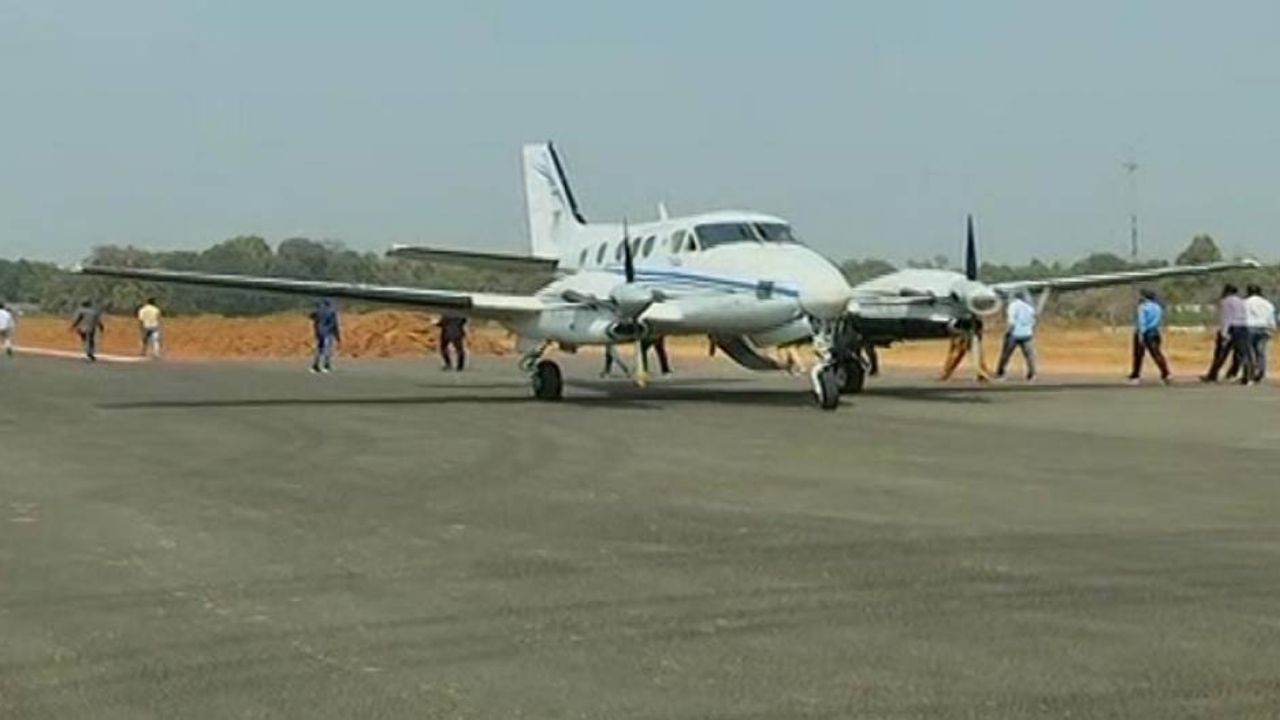The Tusura Airstrip, located in the Balangir district of Odisha, has become the subject of both hope and frustration. Despite significant investments aimed at enhancing regional connectivity, the airstrip remains non-operational. This situation highlights a larger challenge in regional aviation development, particularly in remote or less-traveled areas. In this article, we will break down what’s happening at the Tusura Airstrip, why it’s not being used despite government investment, and what this means for the future of aviation in Odisha and beyond.
The Story of Tusura Airstrip
In 2023, the Odisha government sanctioned ₹65 crore (about $8 million) to modernize the Tusura Airstrip, making it a Category 2B facility. This upgrade was designed to open the doors for regional flights, connecting Balangir and other parts of Odisha to larger cities in India. The project is part of a larger push to improve aviation infrastructure in Western Odisha, a region that has been historically underserved by air travel.
The investment was a game-changer. It was expected to not only improve connectivity but also to boost the local economy, tourism, and job opportunities. In November 2024, the foundation stone for this modernization project was laid, and an Obstacle Limitation Survey (OLS) was completed, which is a key step in ensuring that the airstrip meets the necessary safety standards for flight operations.

However, despite these developments, the airstrip still sits unused. As of July 2025, no airline has shown interest in operating flights from Tusura, leaving the airstrip grounded. This absence of airline proposals has left local residents, government officials, and businesses frustrated, especially since the airstrip was supposed to be a gateway to greater economic growth for the region.
Tusura Airstrip in Odisha’s Balangir District
| Key Fact | Details |
|---|---|
| Government Investment | ₹65 crore ($8 million) allocated for modernization of Tusura Airstrip. |
| Completion of Key Steps | Foundation laid in November 2024, OLS completed. |
| Current Status | No airline proposals for operations, despite being listed under UDAN scheme. |
| Nearby Competition | Utkela Airstrip in Kalahandi already serves as a UDAN destination. |
| Regional Aviation Push | Odisha government plans to establish 4 more airstrips in Western Odisha. |
| Future Plans | Plans to lease out airstrips for flight training institutes under a public-private partnership model. |
| Source | Times of India |
For the full project details, visit the official website.
The story of the Tusura Airstrip in Balangir is one of promise, potential, and perseverance. While the airstrip remains grounded for now, the significant investments in its infrastructure show that there’s a clear vision for improving regional connectivity in Odisha. Moving forward, local governments, airlines, and businesses must work together to ensure that the airstrip becomes a key player in the region’s development. By leveraging available resources and fostering public-private partnerships, the Tusura Airstrip could one day be the gateway to greater economic opportunities and improved regional access.
The Growing Need for Regional Connectivity
Western Odisha, including Balangir, has long been a part of the region that has been somewhat left out of mainstream infrastructure development. While major cities like Bhubaneswar and Cuttack benefit from well-established air travel, remote districts like Balangir have been historically underserved. This lack of connectivity affects both the region’s economic growth and the ease with which locals can travel to other parts of the country.
The push for more airstrips, like the Tusura Airstrip, is part of a broader national initiative to expand regional connectivity through the UDAN scheme (Ude Desh ka Aam Nagrik). The UDAN scheme aims to make air travel affordable and accessible to the common man, especially in underserved and remote areas of India. However, for the program to succeed, there needs to be sufficient demand and airline participation.

What’s Stopping Airlines from Operating at Tusura?
The question that everyone is asking is: why isn’t Tusura being used? After all, the infrastructure is there, and there’s government funding for the project. The main problem lies in the lack of airline interest. While the Tusura Airstrip is listed as an eligible destination under the UDAN scheme, no airline has submitted any bids to operate flights from the airstrip.
A significant reason for this is the proximity of Utkela Airstrip in nearby Kalahandi, which already serves as a UDAN destination. Airlines are reluctant to operate flights to both Tusura and Utkela because it may not be economically viable. Simply put, there isn’t enough demand for regional flights between these areas to support multiple airstrips. Airlines typically prefer routes with higher passenger volumes, and the traffic from this region may not be enough to justify regular flights.
Another factor is the potential for higher operating costs at a newly developed airstrip. While infrastructure may be improving, it takes time for airstrips to become fully operational and cost-effective. Until airlines see a guaranteed return on investment, they are unlikely to commit to flying from Tusura.
What Does This Mean for Western Odisha?
The situation with Tusura is not unique to this airstrip alone. It’s part of a larger struggle in regional aviation, especially in rural and remote areas. While there are multiple initiatives underway to boost connectivity, such as four new airstrips in Western Odisha and the establishment of flight training institutes, the success of these initiatives ultimately depends on attracting airline operators and securing enough demand.
As a result, local businesses, tourism, and residents remain in limbo, waiting for the regional air travel dream to come true. For example, businesses in Balangir could greatly benefit from easy access to larger markets and airports. Similarly, locals who need to travel for medical emergencies or personal reasons would find it much more convenient if flights were available.
However, the long-term potential for Tusura and other airstrips in Western Odisha remains significant. If airlines are eventually drawn to the area, the region could see a boost in employment, tourism, and investment. Additionally, the local government’s initiative to lease airstrips for flight training institutes will offer new career opportunities and help in developing a local aviation ecosystem.
Practical Advice for Regional Development and Investment
- Attracting Airlines: Local governments should engage directly with airlines to make a compelling case for operating in under-served regions. They could offer subsidies, incentives, or guaranteed passenger numbers to make these routes more appealing.
- Strengthening Demand: Before investing heavily in infrastructure, governments can promote the region’s business, tourism, and healthcare sectors to help build sustainable demand for air travel.
- Public-Private Partnerships: The involvement of private players in the management and operation of airstrips can speed up development. The Odisha government’s plan to lease airstrips for flight training institutes under a public-private partnership model is an excellent example.
- Government Incentives: Offering discounts, subsidies, or other incentives to airlines that agree to operate in underserved areas can help lower the financial risk and increase the attractiveness of these routes.
- Building Regional Alliances: Regional airports should work together to create a network that makes travel easier for airlines and passengers alike. For example, having a seamless connection between Tusura and Utkela could boost demand for both airstrips.
MRO Facility in Bhubaneswar: A Leap for Odisha’s Aviation Growth
NIT Rourkela Unveils Eco-Friendly Biofilm to Combat Industrial Oil Spills and Chemical Waste
FAQs
1. Why is the Tusura Airstrip not operational despite government investment?
While the government has invested heavily in the modernization of Tusura Airstrip, no airlines have shown interest in operating flights due to insufficient demand and competition from nearby Utkela Airstrip, which already serves as a UDAN destination.
2. How can local businesses benefit from the airstrip once it’s operational?
Once operational, the airstrip would make it easier for businesses in Balangir and surrounding areas to access larger markets, transport goods more efficiently, and attract tourists, all of which would contribute to local economic growth.
3. What is the UDAN scheme, and how does it help?
The UDAN scheme (Ude Desh ka Aam Nagrik) aims to make air travel more affordable and accessible for people living in remote and underserved regions. Under this scheme, the government offers financial incentives to airlines to operate in these areas.
4. What steps are being taken to increase air travel in Western Odisha?
The Odisha government plans to establish four new airstrips and has proposed leasing out existing airstrips for flight training institutes to create a sustainable aviation ecosystem in the region.
5. How can the success of Tusura Airstrip be ensured in the future?
The success of the airstrip will depend on attracting airline operators, creating demand for air travel in the region, and establishing strategic partnerships with private stakeholders to make operations viable.





